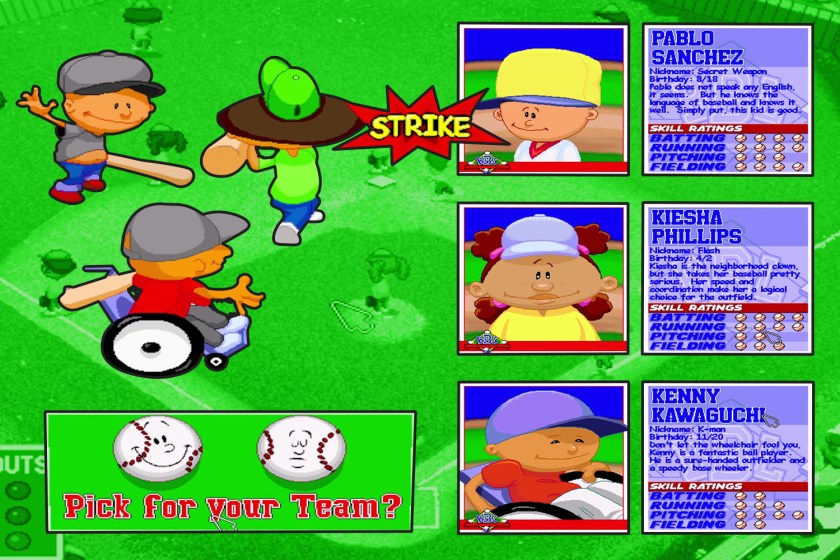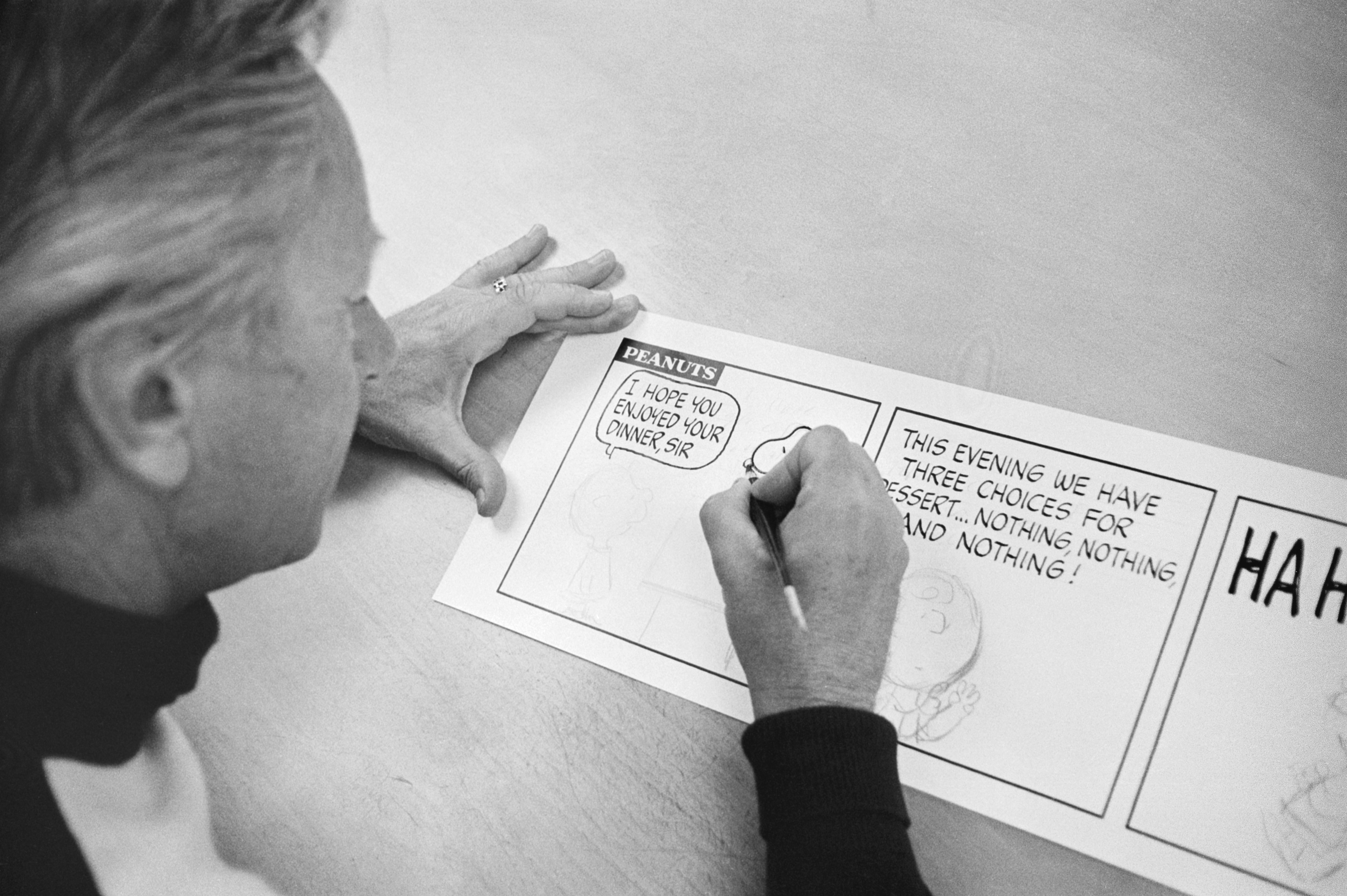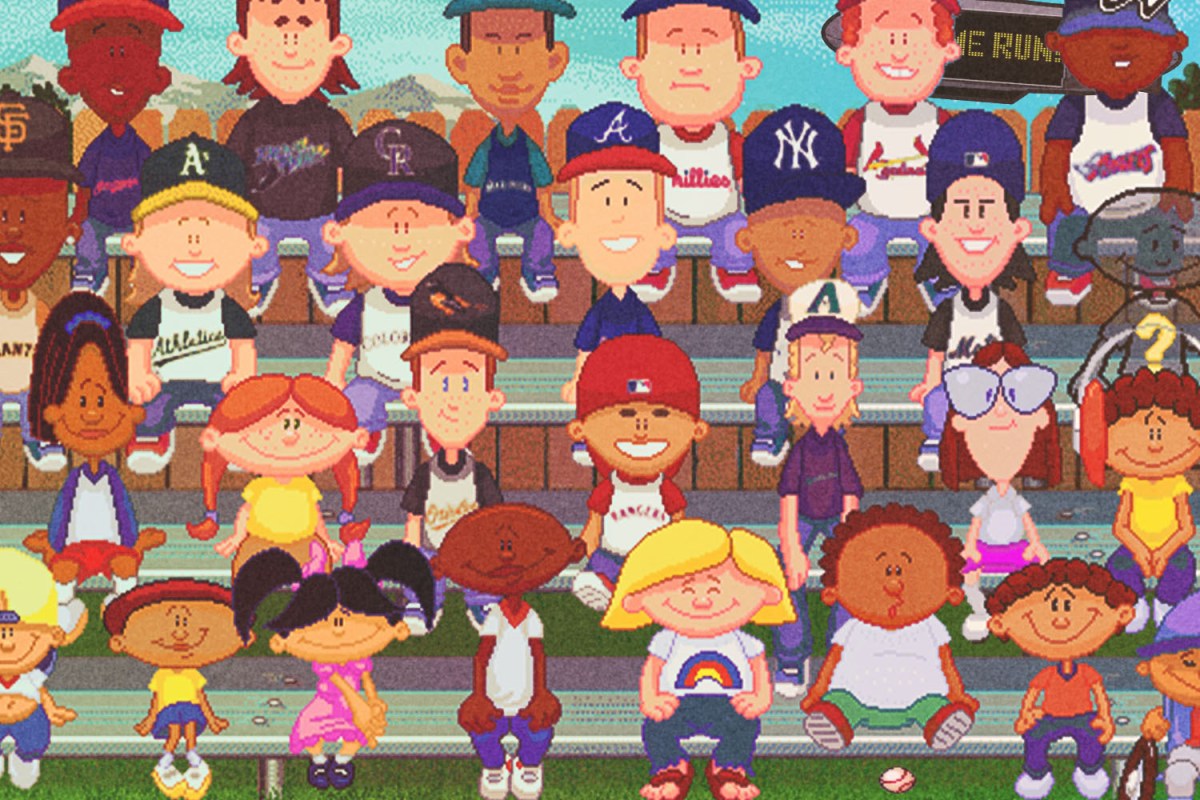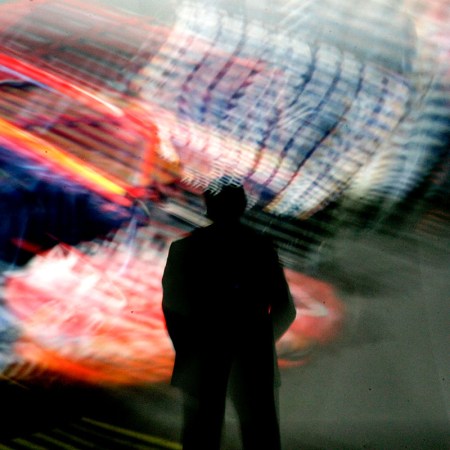On weekend mornings in the early 2000s, my brother and I had an unspoken understanding: whoever got out of bed first had first pass at the Playstation. Second place would have to settle for something else…more sleep, Game Boy, a book, what have you. It was still a good morning — way better than getting dressed for school — but objectively worse than getting to play Spyro, Crash Bandicoot, NFL GameDay or The Need for Speed.
I’ve always been the night owl, my brother the early bird, so my morning hours on the 1990’s coolest console mainly arrived when he was feeling merciful. Then we got Backyard Baseball 2001 for the family’s 50-pound Dell desktop, and the race to the basement didn’t matter so much anymore.
It was the one with an eight-year-old Cal Ripken Jr. on the cover, and Humongous Entertainment’s first release since securing a licensing agreement with the MLB Players Association. The core concept — which debuted in Backyard Baseball a few years earlier, and 25 years ago this autumn — was simple enough, yet had never been done before: a few dozen schoolkids meeting at alleyways, blacktops and sandlots to play ball. Some characters were better at hitting a fastball than others. But everyone was invited.

I couldn’t get enough of it. There was the outlandish commentary from wunderkind duo Sunny Day and Vinnie the Gooch, who unprofessionally picked sides during the games, plugged their unrelated creative projects and imparted straight-faced one-liners whenever one of their peers made a mistake. There were the Mario Kart–inspired power-ups (e.g. an “aluminum power bat” that guaranteed a home run, or a “crazy ball” that would laugh maniacally as you pitched it to the plate). There were the pizza boxes and sweatshirts that doubled as second base or home plate, or the fact that if you played a full season in managerial mode, you somehow advanced from playing next to Kimmy Eckman’s parents’ patio to a ballpark that could pass for the Rogers Centre — aptly dubbed the Super Colossal Dome.
Everything about Backyard felt real to me at that time — not just because I was starting to recognize the blissful portal an hour of neighborhood play offered in my own life, but because I specifically didn’t know the full extent of the universe that existed in Backyard. It was brand-new: the foreign excitement of a road trip to a relative’s town, or that first day of walking around school with a new kid, multiplied by 1,000. I wanted to know everything about my fledgling friends. Fortunately, Humongous spared few details.
Take Tony Delvecchio. He was a great outfielder, with a cannon for an arm and some pop in his bat. But he was also a huge fan of The Doors and Jimi Hendrix, an excellent air hockey player and, apparently, a sap. Throughout the Backyard Sports series, sister Angela Delvecchio hinted that Tony was more emotional than his braggadocious aura let on. You could discover these delightful morsels by clicking on Tony’s player card or listening closely to the in-game broadcasts, but you’d have an idea of his personality — or that of Kiesha Phillips, or Mikey Thomas, or Luanne Lui — just by watching them step up to the plate. Some characters stormed into the box, playing air guitar on the baseball bat. Others arrived timidly, a teddy bear in tow. All of them had specially-composed walk-up music.
The rich result of all this world-building was an unusual triumph, but then, so were the circumstances under which Humongous designed the original game. As The Ringer reported in a deep-dive five years ago, Humongous was exclusively creating educational software before it created Backyard. This was its very first sports game, and it was created with a blend of obsession and absurdity that would normally meet its swift end at the pursed lips and raised eyebrows of a large developer’s first-round focus group.
But not here. No one got in the way of the game’s distinctive hand-drawn style, its humor or, thank god, Pablo Sanchez, the rotund, belly button-baring “secret weapon,” whom the game’s designers didn’t initially mean to make that good. (Pablo morphed into a cult-classic cheat code, one of the most reliable video game athletes ever created.)
These qualities didn’t just make it into the game, they became the game. Even as elementary school-aged iterations of big leaguers arrived (Ken Griffey Jr., Randy Johnson, Derek Jeter, etc.) — via a partnership that MLB absolutely loved because it gave them a creative runway to curate fan engagement from nascent millennials — the core of Backyard Baseball was always its ragtag coterie of area ne’er-do-wells. The original game pitted them on a baseball diamond, and the ensuing series eventually put them on football fields, soccer pitches, basketball courts and half-pipes. But for all intents and purposes, they could’ve been playing capture the flag.
Can Ted Lasso Save EA Sports?
Better graphics is nice. But playing as AFC Richmond is a revelation.The point was always the cast and the canon that surrounded it. But the game wasn’t just a fun place for a fourth-grader to escape to on a a Sunday morning. In fact, it likely had more of a cultural impact than even a nostalgic Reddit board gives it credit for. (Which is saying something.) Why? Well, Backyard was a shockingly progressive game for its time. It was an unintentional Trojan Horse that forced children to interrogate, appreciate and potentially even treasure their differences. Looking back a quarter-century after the game was released, reflecting on all the progress we’ve made as a society and how far we still have to go, it’s hard to believe that a game that looks and sounds like Backyard came out in 1997.
Check it out with your own eyes right here, in a sketched chart of every character in the game, dated February 2000: there were 15 boys and 15 girls, with at least a half-dozen races included and polychromatic skin tones throughout. (That’s to say: not every character of a particular race was reduced to the same exact hue.) There were different shapes, sizes, abilities — Kenny Kawaguchi played in a wheelchair, while characters’ heights ranged from the 6’1″ Billy-Jean Blackwood to the barely-3″ Pablo. There were even slight nods to varied socioeconomic backgrounds. Marky Dubois didn’t have shoes, while Ashley and Sidney Webber looked like they ate watercress salads at their dad’s country club.
Crucially, none of these distinctions appeared to have any bearing on the skillsets of the players. It’s been a minute since I’ve played, but if I were putting a lineup together today to contend for the “Backyard World Series,” I’d want some combination of Pablo, Tony, Kiesha, Stephanie, Achmed, Jocinda Smith and Pete Wheeler. If playing with Backyard 2001, I’d sprinkle in players like Alex Rodriguez, Mark McGwire and Mike Piazza (one hazard of the era in which Backyard was created — most of its players were indicted in steroid scandals). But I’d still want to build around my local crew. And cartoon flourishes aside, that core was always comprised of kids who look literally nothing alike.
I can’t say that fact resonated with me when I was playing the game, though I’m sure it did for someone who wasn’t used to seeing characters who looked like them in any computer game, let alone a sports computer game. And it clearly resonated for the parents who purchased Backyard installments. Humongous Entertainment was the best-selling computer game developer in the early aughts, full stop.
Of course, not every Backyard character was talented at baseball. Some of them were duds. I didn’t trust Dmitri Petrovich with two outs and runners in scoring position, for instance. But if everyone was good, it wouldn’t have made any sense. That’s not how recess works. It would’ve limited the fun, confused Backyard‘s premise and dulled the wonder of those early gaming days, when you’re giving anyone and everyone in the dugout the chance to come up with the big hit — or, at the very least, say something insane on the way to the batter’s box. How else would I have learned Dante Robinson’s favorite sandwich, nicknamed “The Dante Sandwich,” calls for peanut butter, jelly, potato chips, pickles, bananas, whipped cream and a couple of hot dogs on raisin bread? Excellent.

In April 1968, less than two weeks after Martin Luther King, Jr. was assassinated, a California teacher wrote a letter to Charles Schulz, asking the cartoonist to consider adding a black character to his Peanuts comic strip. She thought it might play a tiny role in tampering the “vast sea of misunderstanding, hate, fear and violence” that had fallen over the nation. She didn’t expect a reply. But Schulz wrote back, willing to engage with the idea. He was uncertain he was the right man for the job — what if black families considered the character condescending? In late July, though, after an open dialogue with the teacher on how to make the potential character “relatable,” Schulz introduced Charlie Brown to a black boy named Franklin during a day by the sea. After Franklin returns Charlie Brown’s beach ball, the two of them built a sand castle together.
From an action or dialogue perspective, Franklin wasn’t a particularly memorable Schulz creation. He was kind, collected, a skilled dancer. On a camping trip or at a party, he would sometimes swap grandfather stories with Charlie Brown. Still, the character meant everything to Robb Armstrong, who was six years old when Franklin made his debut. Armstrong informed his mother at the age of three that he wanted to be a cartoonist. His dream came true, and early in his career, he sent a special edition of his Jump Start comic strip to Schulz. More than a year later, when he finally got to meet his hero, he found the strip hanging framed above Schulz’s desk. Schulz accurately predicted that Armstrong would have a long, successful career — and sure enough, Jump Start is the most widely syndicated daily strip ever created by a black American. In 1994, Schulz finally gave Franklin a last name: Armstrong.
Pablo Sanchez’s round, oversized head was originally based on Charlie Brown, as were many of the recognizable qualities of the Backyard cast, from their dotted freckles to their deadpan quips. The lineage is imperfect, as squiggly as the line on Charlie Brown’s yellow polo, but it’s there: creators realizing that their choices matter. Their inclusions, their omissions, their sense of justice, their sense of humor — these things make a difference. Even (and you could say especially) in a cartoon strip, or a computer game.
The gaming world has long employed a dizzying slate of colonist quests, half-assed stereotypes, misogynistic storylines and racist voice actors. Representation hasn’t just been passively lacking during the last 50 years; too often, different backgrounds have been actively mocked or villainized, while women have been shoehorned into games as eye candy or trophies. Suffice to say, Call of Duty has never passed the Bechdel test. That’s no call for the government to come take away your Xboxes. It’s just a reminder that the real world is unfair, and it might be nice, once in a while, to build our alternative ones with justice, open-mindedness and inclusivity. Increasingly, games appear to be trending in the right direction (from toddler-geared learning apps, to RPG shooter missions), but there’s still work to do.
There will never be another Backyard Baseball. Sure, the trademarks still exist, and the IP is solid enough that some streaming giant might give it a closer look for an animated series. Sunny Day’s sunny universe will never really go away, but it will be difficult for content creators to replicate the passion, creativity, luck and cheek that Humongous Entertainment wrangled together in 1997. Hopefully, though, they’ll take inspiration from the game’s core thesis: that everyone on the playground deserves to play. Whatever console my kids are racing for on weekend mornings, I hope they pick up just a little bit of that along the way.
The Charge will help you move better, think clearer and stay in the game longer. Subscribe to our wellness newsletter today.




















